目次
Craft Report
The Journey of a Silversmith.
The origins of silverware craftsmanship in Tokyo trace back to the mid-Edo period, when shiroganeshi (silversmiths) emerged alongside kinkōshi (metal artisans) who made combs, hairpins, and decorative fittings for portable shrines (mikoshi). Silverware and silver utensils became widely cherished among townspeople. In fact, the familiar name Ginza comes from the location where silver coins were minted and silver bullion was traded during the early modern period.
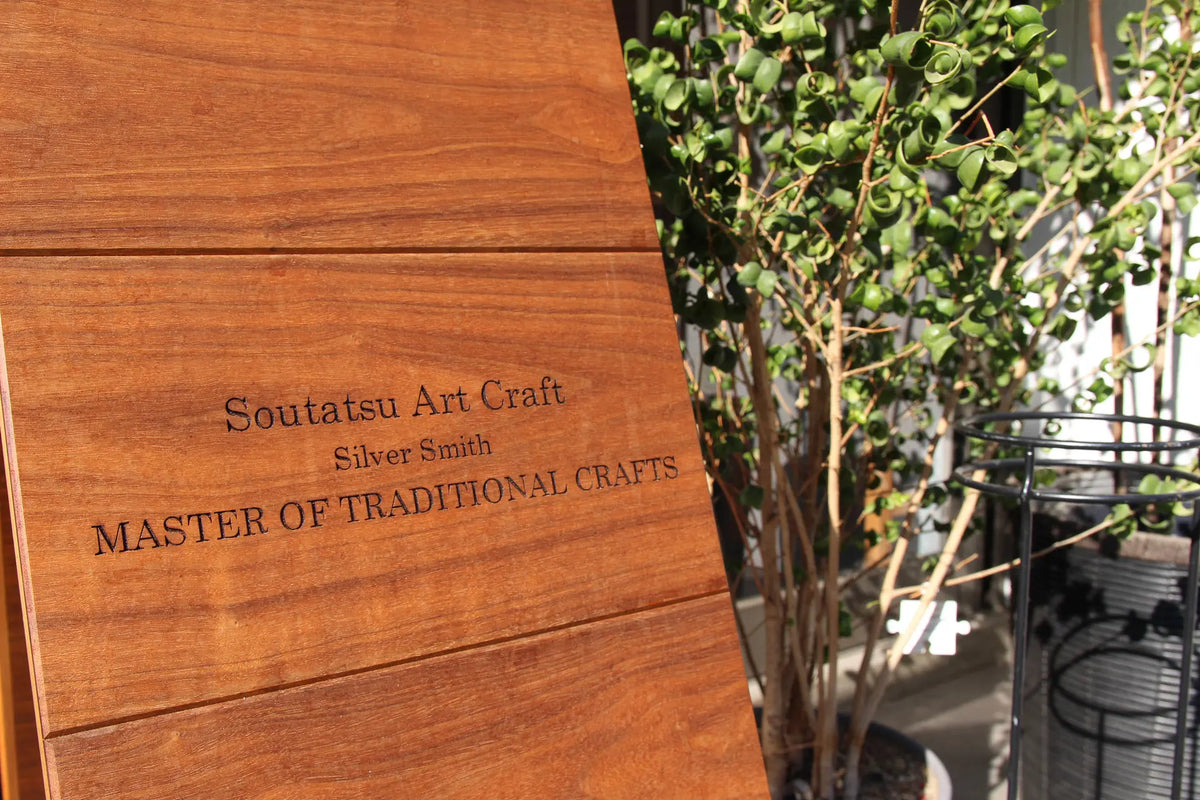
Workshop of Sotatsu Art Craft.
Born into a family of silversmiths, Sotatsu Kamikawa began his training under his father, the second-generation master Sōsho Kamikawa, in 1998, learning the techniques of tankin (hammering). Later, he was deeply moved by the inlay works of Hōseki Okuyama, a Living National Treasure, and became his disciple. “When I first saw his work, I couldn’t move for 30 minutes. I just wanted to keep looking. I thought, I want to create works like this myself, and personally asked to be accepted as his apprentice,” recalls Sōtatsu.
From Okuyama he received words that remain etched in his mind: “Strengthen your humanity.” The idea that a craft reflects the maker’s thoughts and character continues to shape his philosophy. By age 30, he became the youngest artisan to be certified as a Traditional Craftsman in the field of silverware. In 2023, he exhibited at Tokyo Teshigoto GINAME and won the President’s Award of the Japan Traditional Craftsmen’s Association at the 48th National Traditional Crafts Exhibition.
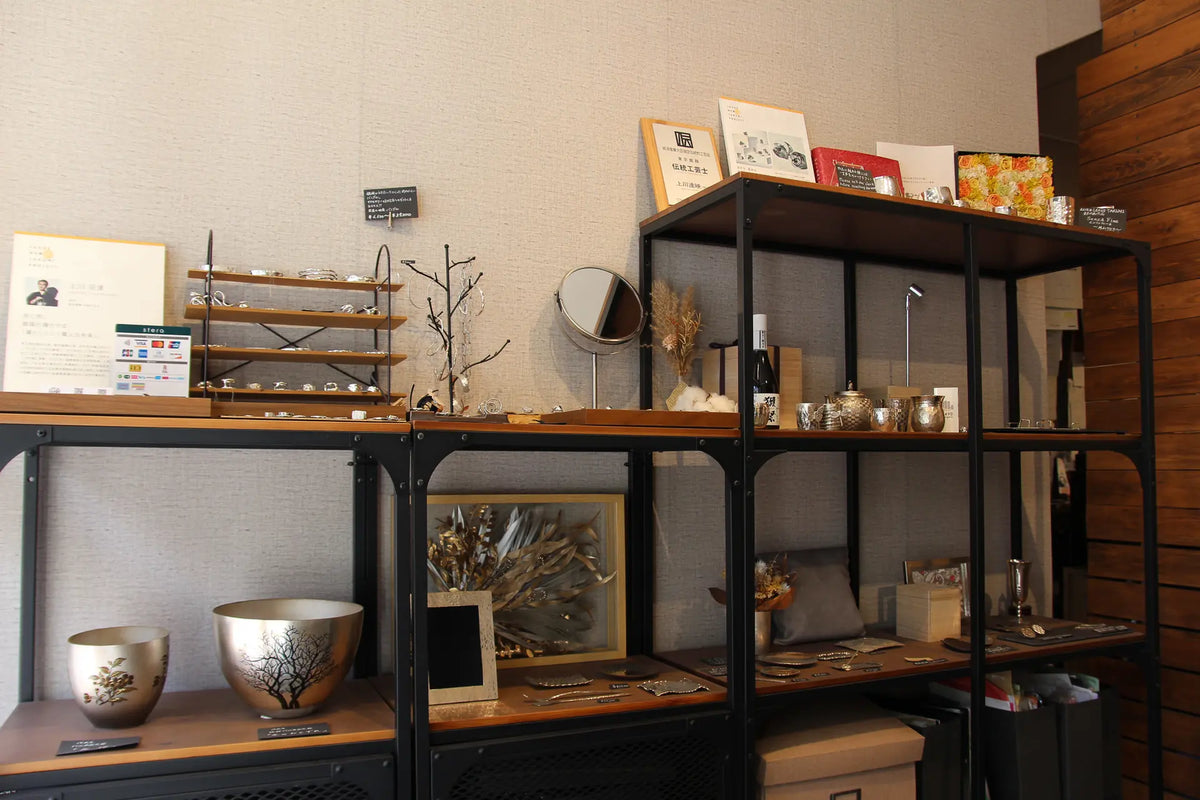
Each Strike Imprints Heart and Density.
There are three major techniques in silverware: tankin (hammering), chōkin (engraving), and chūkin (casting). Sōtatsu specializes in and continues to evolve tankin. Its hallmark is that hammering increases the density of the metal. Unlike forms made by a 3D printer, hammered silver gains strength from its density. Even if dented, hammered silver can be reshaped and used for generations.
When shaping silver, artisans hammer it against a tool called an ategane. During his apprenticeship with Okuyama, Sōtatsu wasn’t even allowed to touch silver at first—he began by making ategane. “If you can’t make your own tools, you can’t make true silverware. By pursuing your tools, you bring out your individuality.” To this day, he values making his own tools. Smiling, he says: “If you only use store-bought tools, you’re limited to what they can do. But if you can make your own, your design ideas expand infinitely.”
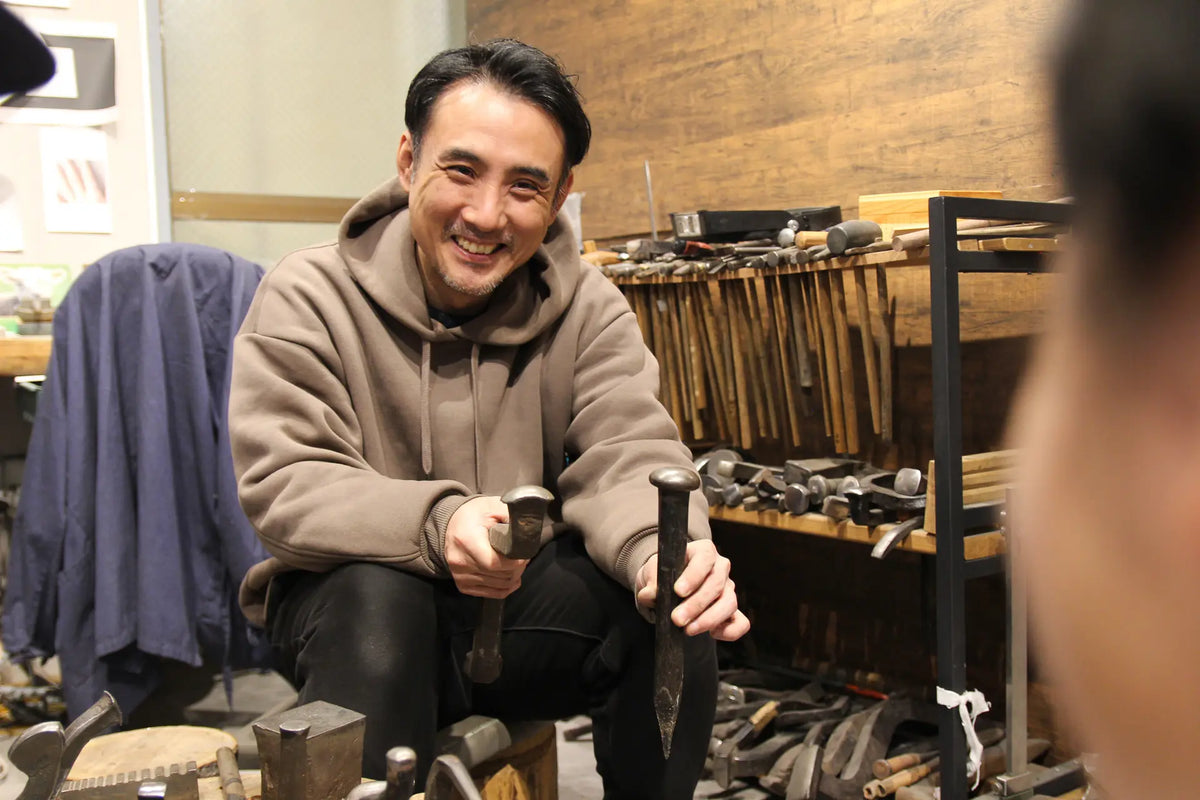
Sōtatsu Kamikawa.
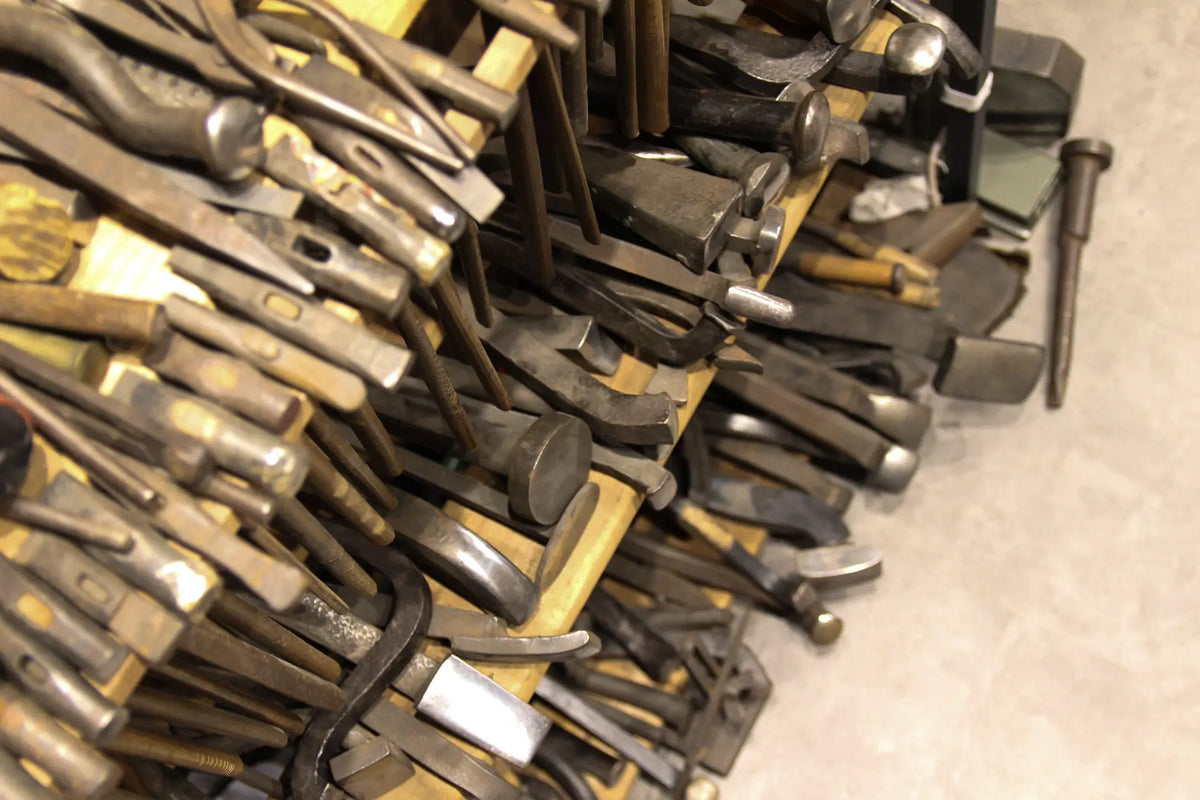
Tokyo silverware embodies yō no bi—the Japanese aesthetic of “beauty in utility,” combining practicality with artistic beauty. For example, the spout of a kettle is made separately and then attached, since the spout is the most vulnerable part if the kettle is dropped. It is forged thicker and stronger than other parts. In this way, every step of Tokyo silverware is designed with both beauty and practical use in mind.
“Handmade means no two pieces are identical. It’s not copy-and-paste, which means the information contained is different. The beauty of handcraft lies in 1/f fluctuation—the natural rhythm that brings comfort through irregularity within uniformity. If something can be fully explained or replicated, it might as well be machine-made.” Sōtatsu continues to pursue the irreplaceable possibilities of handcraft.
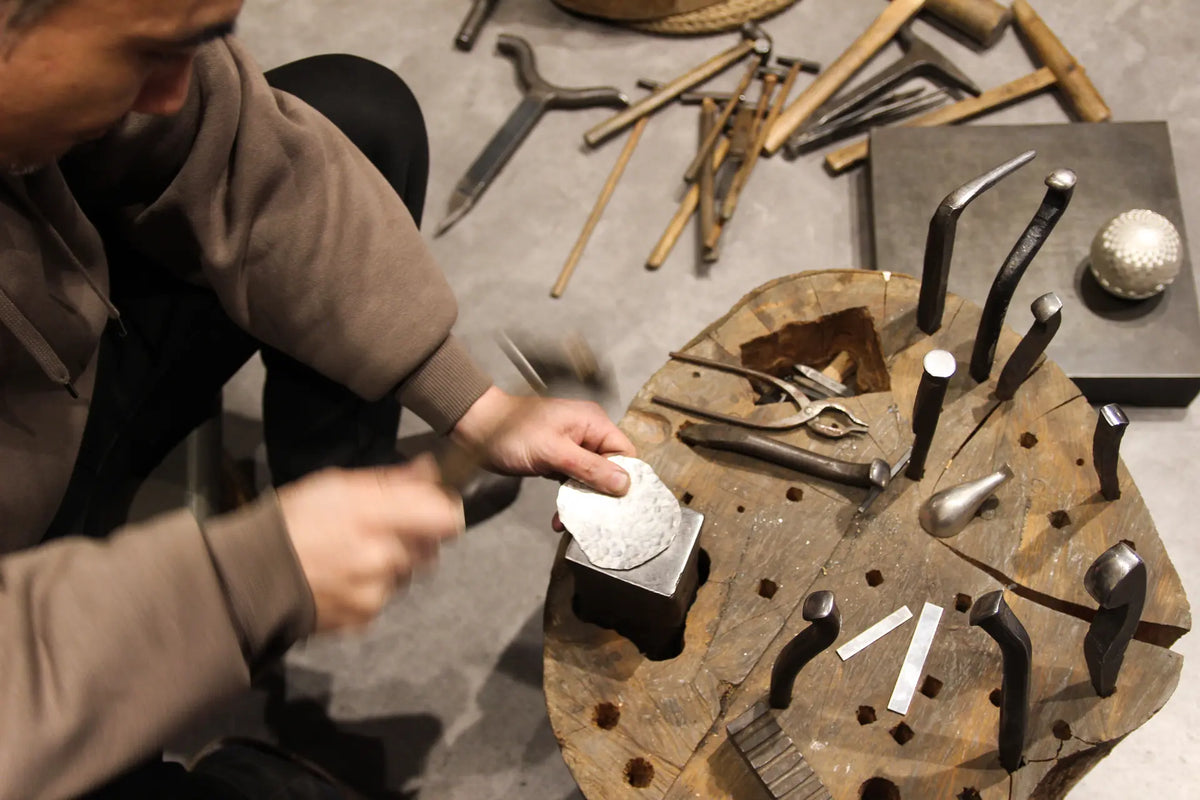
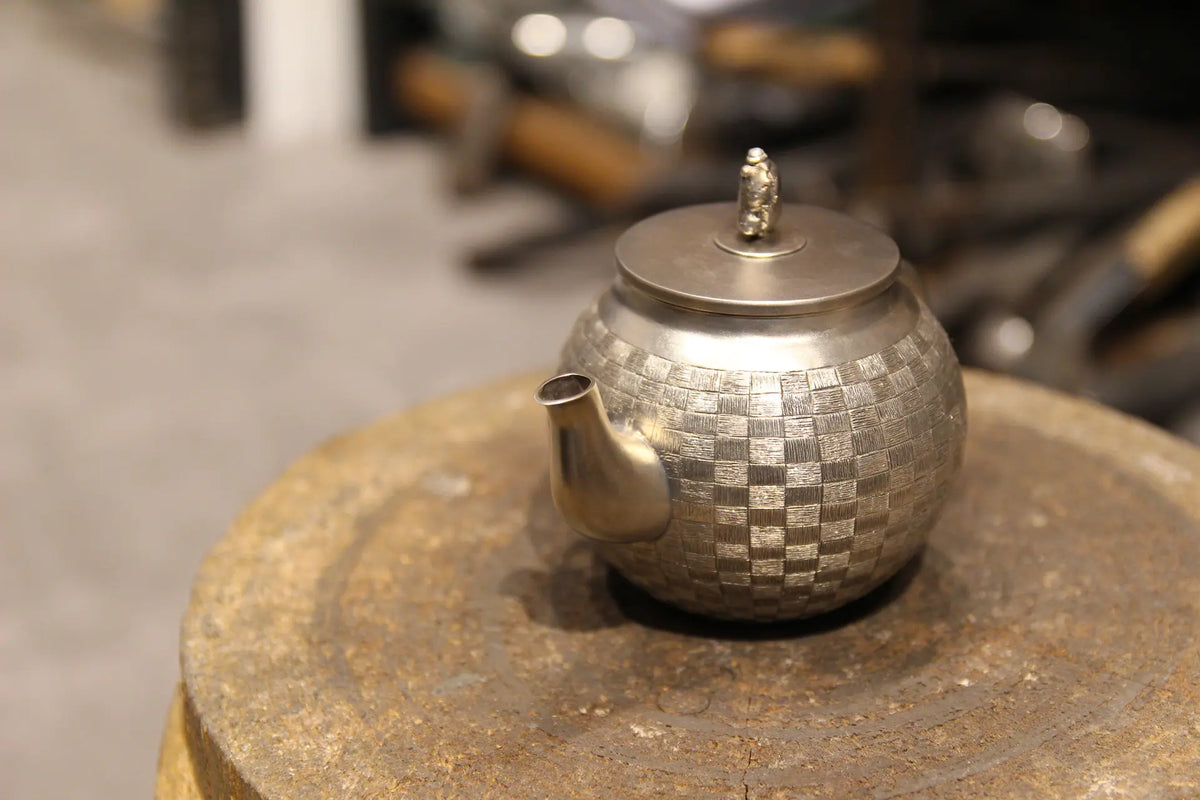
Pure silver checker-pattern cooler.
Pure Materials and Intellectual Curiosity.
The silver he uses is 999 purity—99.9%, nearly pure. It is not called 1000 because the Mint declares that absolute pure silver cannot exist. While the global standard sterling silver is 92.5% pure, Sōtatsu insists on 999 despite its softness, since his careful workmanship and hammering technique give it strength.
His reasons are threefold: it does not oxidize or tarnish easily, it minimizes risk of metal allergies, and it allows people to appreciate the true natural color of silver.
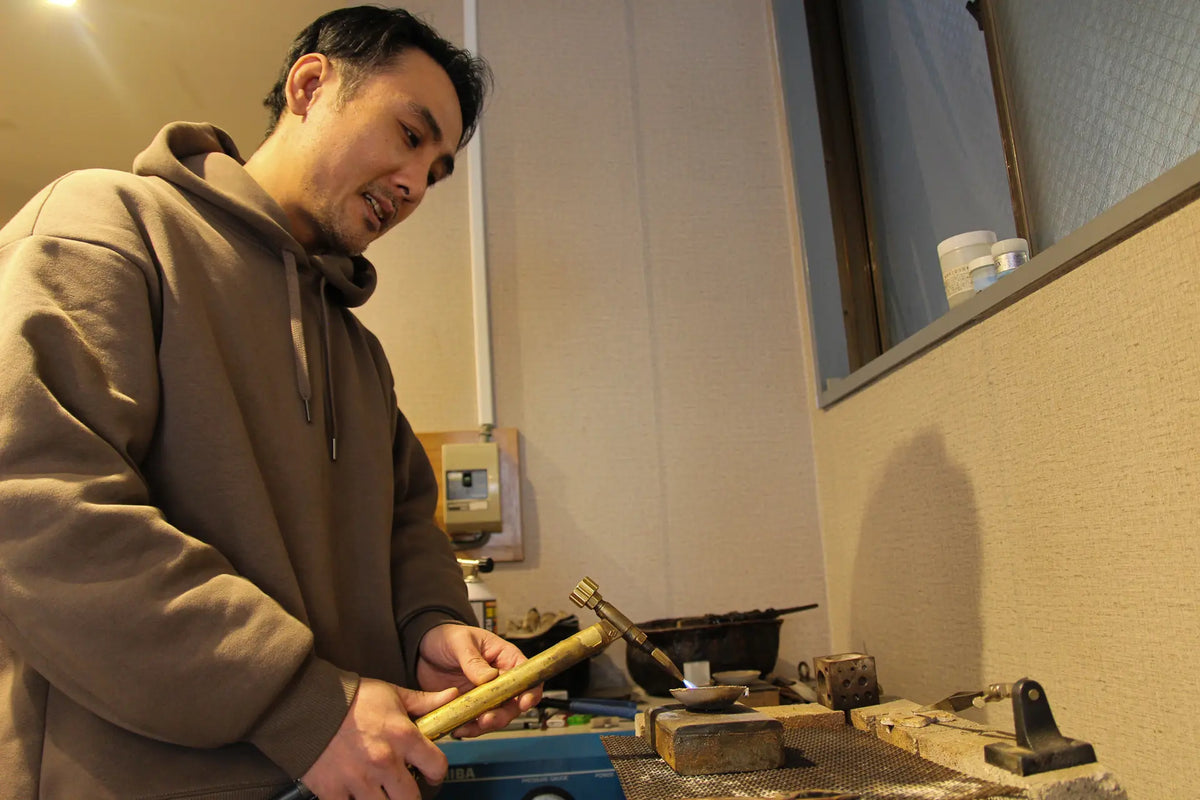
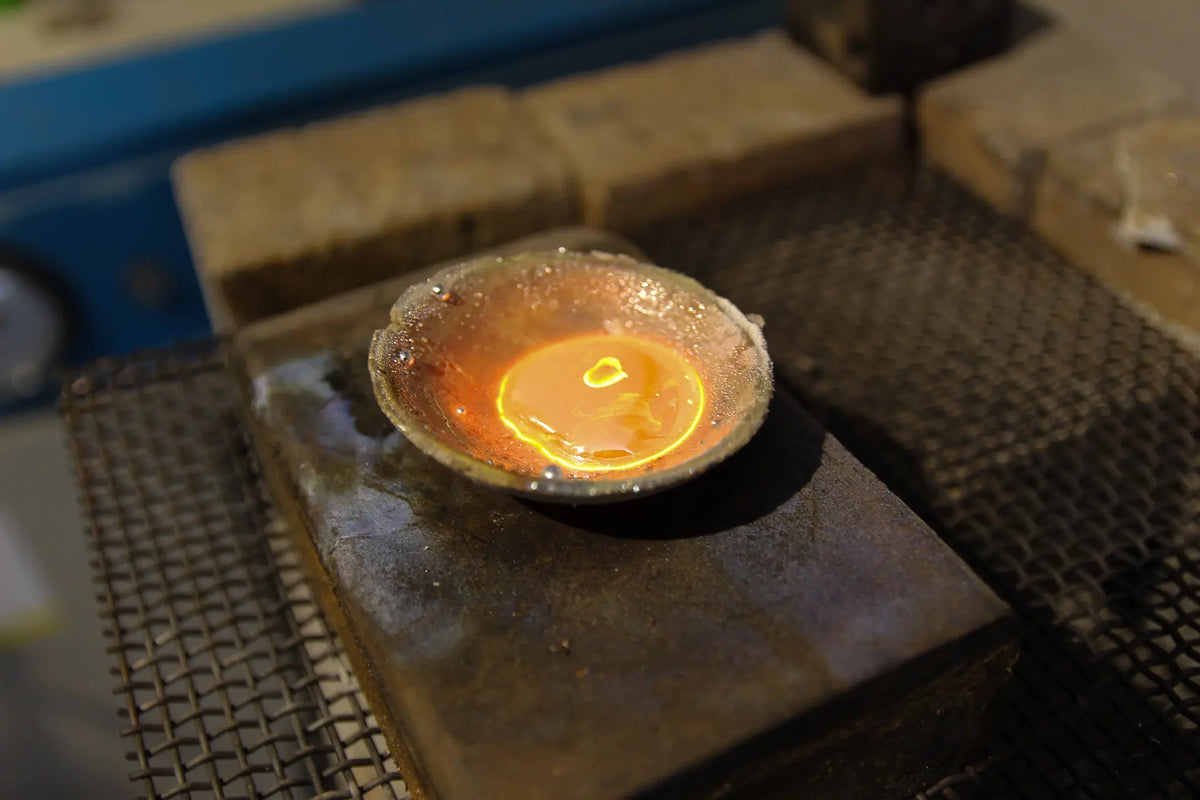
Silver melted, cast into ingots, then hammered into form.

His fascination with silver extends beyond technique into history and chemistry. In Europe, silver was long used in crucifixes, chalices, and even to ward off evil, such as in Dracula lore. For Sōtatsu, silver’s depth lies at the intersection of “technique,” “history,” and “chemistry.” “I want to devote my life to exploring this depth, to become the one who knows it best.” Through his work, he delivers the brilliance of authentic silver color to the world.
Objects of True Quality, Instinctively Grasped.
“What matters most is when someone buys a piece simply because they found it beautiful, and only later realize it is a traditional craft. That shift—‘Ah, no wonder it felt so good!’—is what I wish for,” he says.
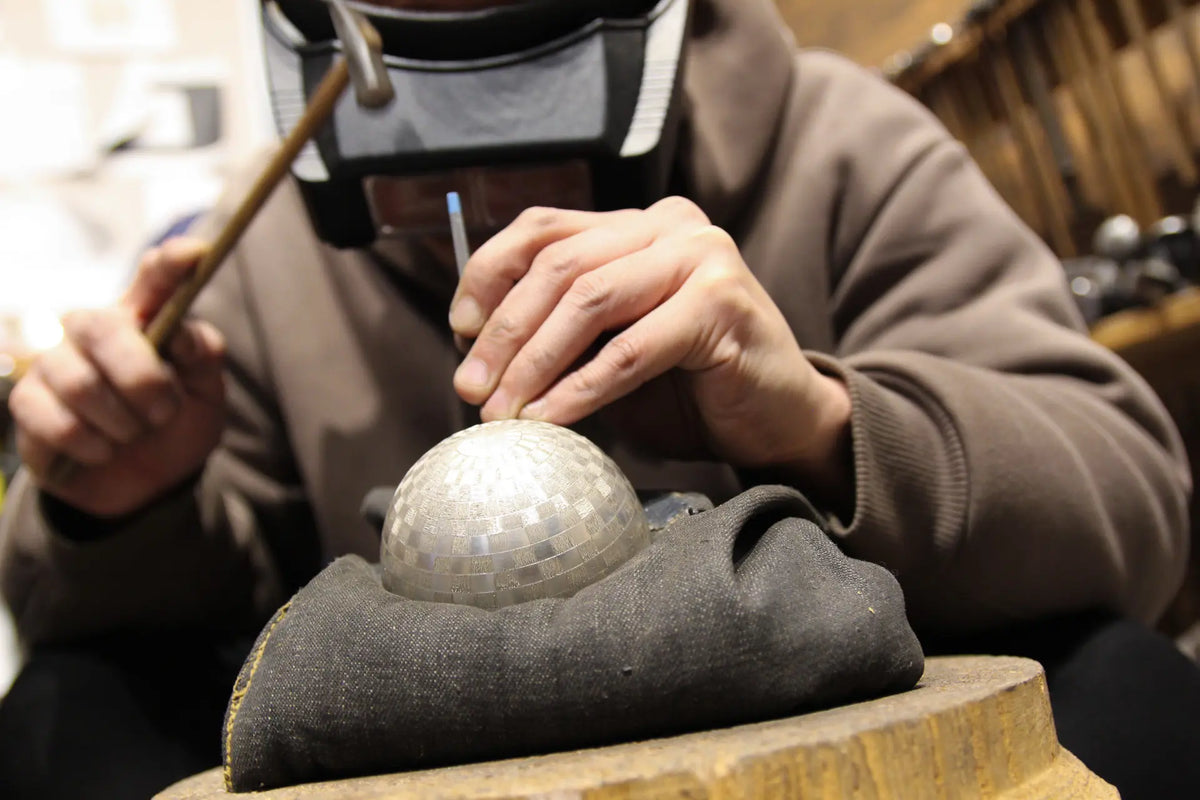
For him, tradition is not about formality but about the inherent quality that validates tradition itself. He aims for silverware to be like the music of Southern All Stars: something that resonates across generations, from young people to the elderly. His workshop doubles as a gallery, displaying accessories, cutlery, kettles, and more, allowing him to observe customer reactions firsthand. Even items that don’t sell provide him with hints for how to create works that appeal across ages.
He refines design, balance, and price through constant adjustment, always asking: What truly makes something good?
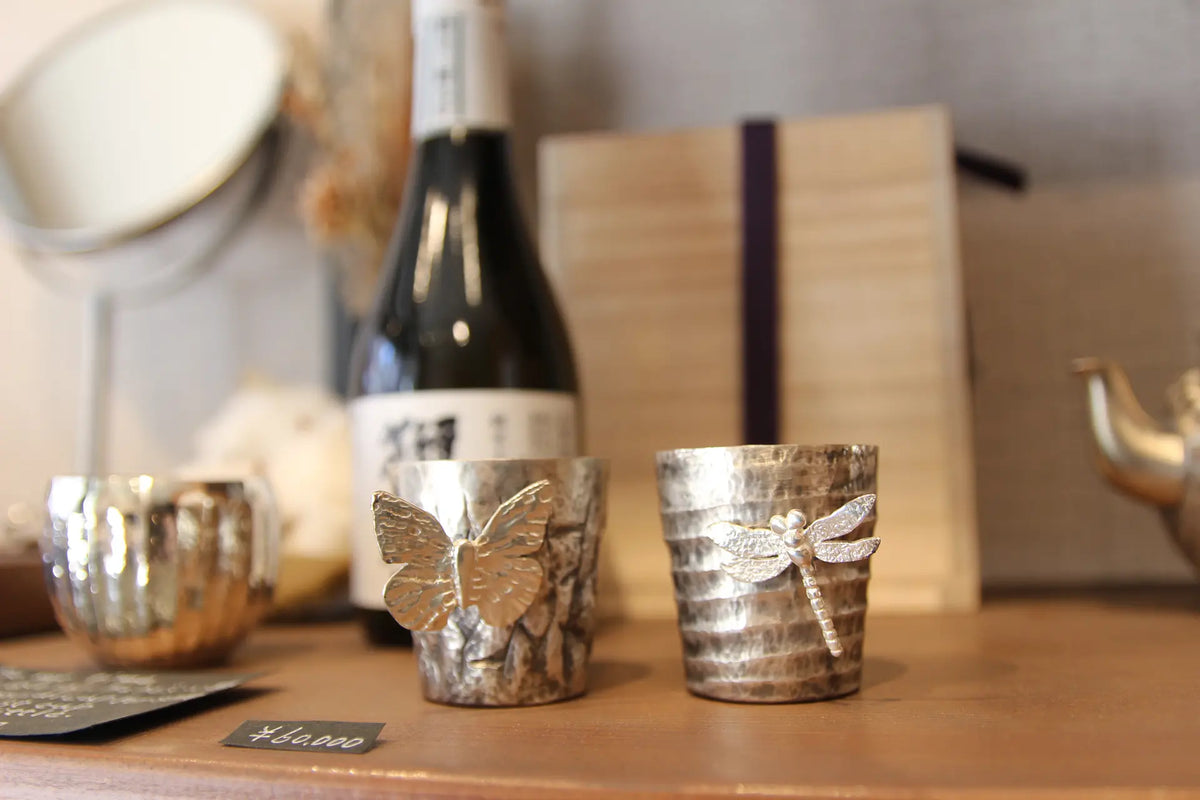
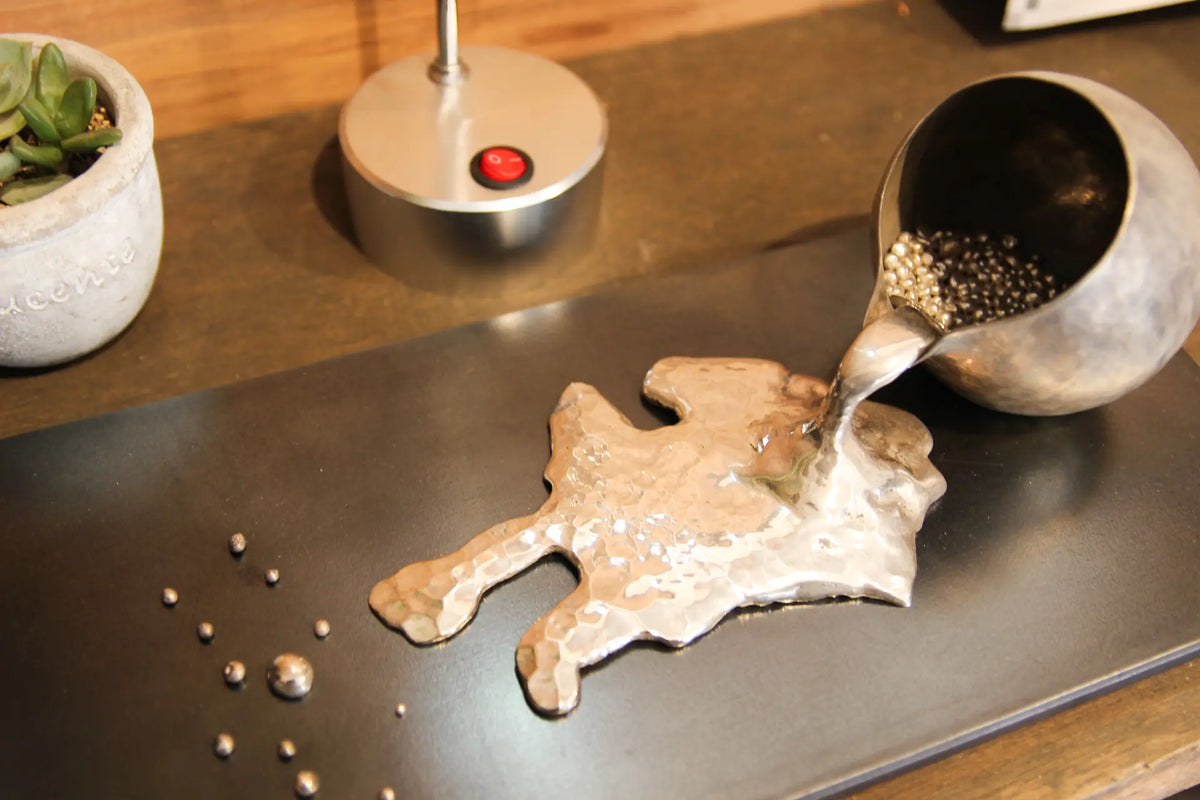
“I believe now is the era of selective use. It’s not about filling your life entirely with traditional crafts—sometimes a 100-yen store item is perfectly sufficient. The point is to know what’s truly good and use it wisely.”
“What I ultimately want to make are things that, though just tools, would make someone cry if they were gone. That’s my goal.”
“Tradition is not something to protect for its own sake. You have to enjoy it. When you’re enjoying the work, you naturally start thinking about the people who will use it, and new ideas emerge.”
Lighthearted yet deeply committed, Sōtatsu envisions a future where Tokyo silverware is cherished and seamlessly woven into modern life.





